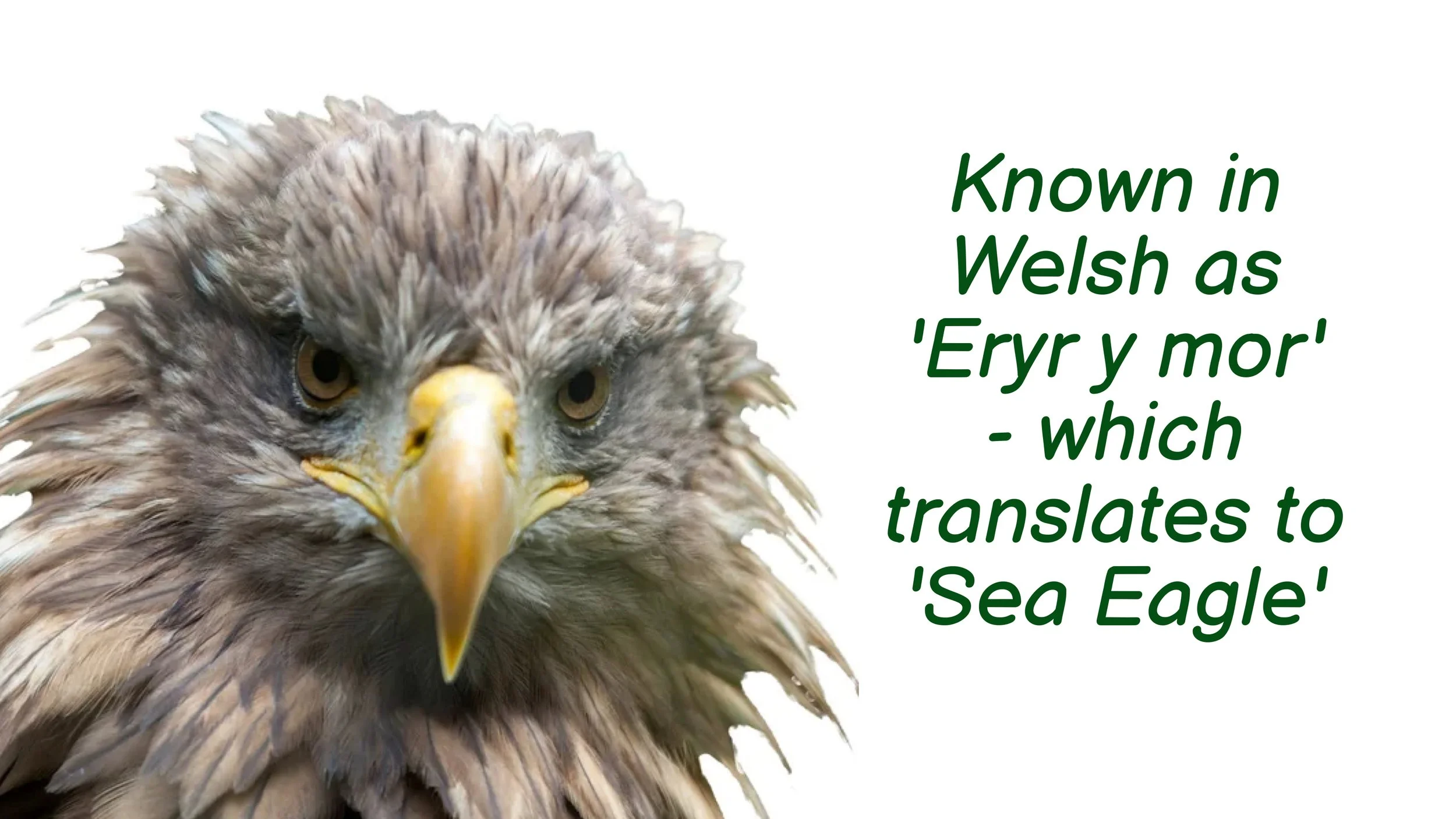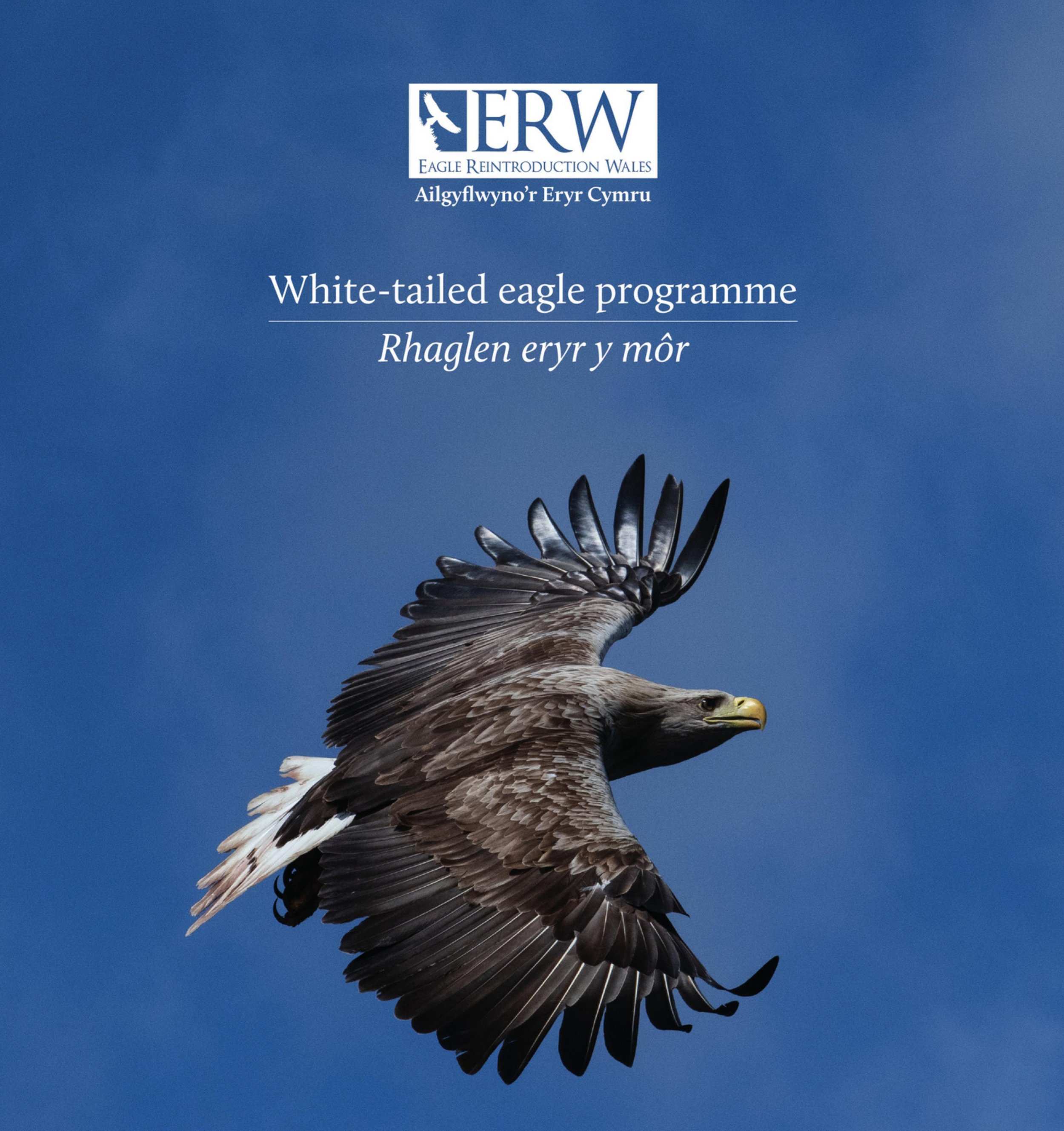White-tailed eagle programme
Project status:
Our White-tailed Eagle Programme has now completed all feasibility assessments to determine whether this species can be successfully restored to South-east Wales and the Severn Estuary. These assessments concluded that a carefully managed reintroduction is both ecologically appropriate and highly favourable for Wales.
Following this work, the programme has submitted a formal licence application to Natural Resources Wales and is now awaiting an official decision, expected by March 2026.
If granted, the project will move into a five-year reintroduction phase (2026–2030)—marking the beginning of a landmark conservation effort to bring Eryr y Môr back to Welsh skies.
Project partnerships:
Durrell Wildlife Conservation Trust, Gwent Wildlife Trust and the Wildfowl and Wetlands Trust.
Junior partnerships:
British Birds of Prey Centre and Cardiff University
Project Funding:
Our White-tailed Eagle programme is currently being funded by the Ecological Restoration Fund.
Feasibility Reports for Southeast Wales:
All reports will be uploaded to the ERW website soon.
Other Research:
Lucy Rowley [2023-2026]. Understanding the genetic variation of current UK and European White-tailed eagles to inform future UK translocations. Cardiff University, PhD Thesis [Ongoing].
Andrew Peat [2023]. Population Viability Analysis to inform the reintroduction of White-tailed eagle to Southeast Wales. Cardiff University, Master Thesis [Onoging].
Gregory Miles [2023]. The spatial and temporal distribution of summer prey items for White-tailed eagles across the Severn Estuary & Bristol Channel. Cardiff University, Master Thesis [Ongoing].
Matthew Cooke [2023]. The spatial and temporal distribution of winter prey items for White-tailed eagles across the Severn Estuary & Bristol Channel. Cardiff University, Master Thesis [Ongoing].
Sophie-lee Williams, Sarah Perkins, Roy Dennis, James Byrne & Robert Thomas (2020). An evidence-based assessment of the past distribution of Golden and White-tailed Eagles across Wales. Conservation Science 2(8). Available here.
Lauren Rees (2020). Assessing Welsh public attitudes towards White-tailed Eagles in South Wales. Implications for future reintroduction. University of the West of England, Master Thesis [Unpublished].
Sophie-lee Williams [2021]. The Eagle Reintroduction Wales (ERW) project: An assessment to restore our native-lost eagles. Cardiff University, PhD Thesis. Available here.
Photo Ⓒ Jeff Smith
Art Ⓒ Molly Bevan











